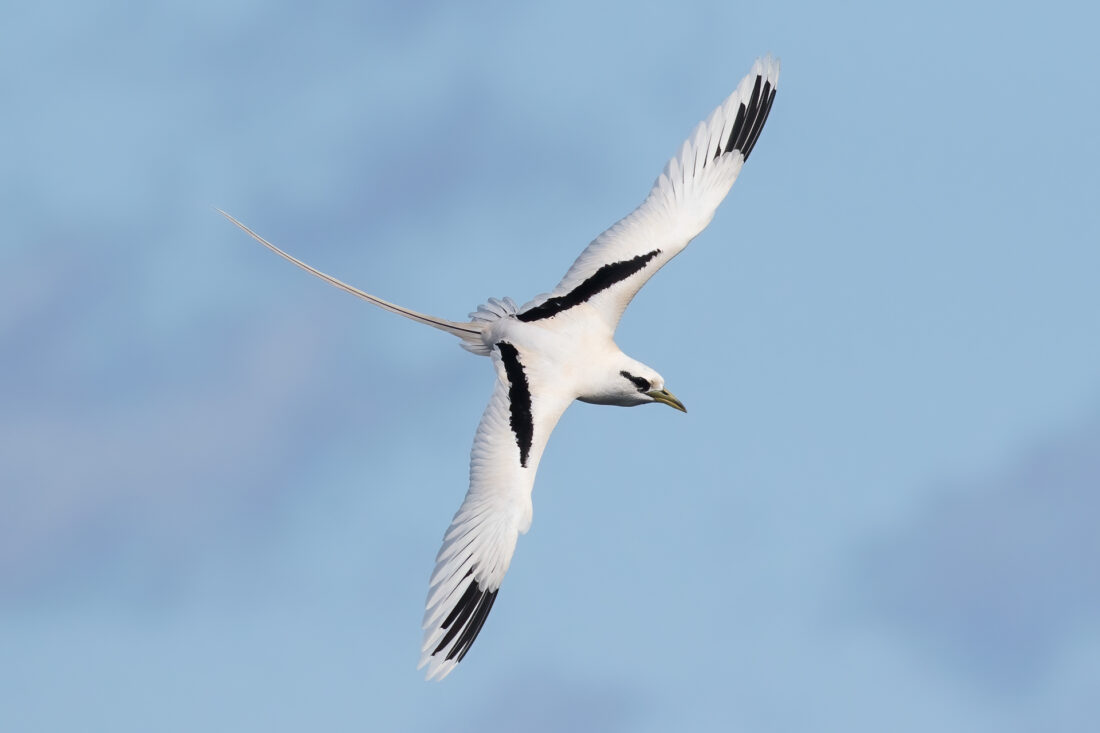
Status Indigenous to Hawai’i, found in tropical oceans worldwide. IUCN: Least Concern
Hawai’ian Name Koa’e kea
Scientific Name Phaethon lepturus
Family Phaethontidae
Population < 4,000 (Hawai’i), < 400,000 (estimated, worldwide)
Feeding
Koa’e kea dive from as high as 65 feet to grab fish, squid, and small crustaceans with their serrated beaks. Flying fish are a particular favorite.
Breeding
Koa’e kea display a complex aerial courtship in which groups of up to 20 pairs fly in large, vertical circles and patterns while swinging their tail streamers from side to side. Once the male has attracted a mate, pairs break off from the larger group and perform a synchronized, zigzag glide to their nest on a cliff or a sheltered spot on the ground.
Breeding occurs between March and October in the main Hawai’ian islands at the following locations: Waimea Canyon, Kīlauea Point National Wildlife Refuge, and the Nā Pali Coast on Kaua‘i; Pelekunu Valley, Waikolu, and windward sea cliffs on Moloka‘i; Kaholo Pali, Maunalei Gulch, Hauola Gulch on Lāna‘i; Kīlauea Crater and windward coast on the island of Hawai‘i, and the offshore islet Mokoli‘i. A few pairs nest on southeastern O’ahu and Midway Atoll. Outside of Hawai‘i, koa‘e kea breed on oceanic islands throughout the Atlantic, Indian, Pacific, and Caribbean oceans. Outside the breeding season, adults are solitary and pelagic, and their range is poorly known.
Incubation period – 40-42 days
Chick period – 70-85 days
Nest habitat – Frequently inaccessible crevices or ledges on cliff walls
Conservation Actions
Eradication and control of introduced predators at breeding colonies is critical for long-term population stability. Koa’e kea are also susceptible to habitat destruction by humans and natural erosion.
Cultural Information
In Native Hawai’ian tradition, the kinolau (body form) of Oʻahu chief Punaʻaikoaʻe can be seen as the koaʻe kea flying over Kīlauea.
